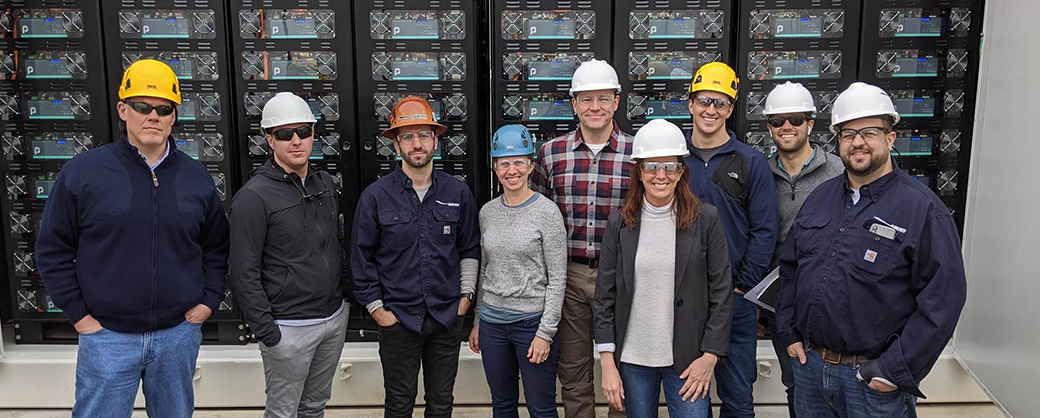Voltility: US Energy Storage Market Gets Ready for its Breakout Year
The Covid-19 pandemic has had surprisingly little impact on the expansion of utility-scale battery storage systems in the US. While social distancing protocols and other lockdown measures have inevitably delayed planning and permitting processes, projects under construction – or close to it – have been largely unaffected. As a result, 2020 has remained on course to provide a springboard for exponential growth over the next five years.
Covid-enforced delays in planning and permitting procedures have given ‘first movers’ in the sector even more of an advantage over new entrants than they enjoyed at the beginning of the year. The viral outbreak has not, for example, caused any significant interruption to the business of Glidepath, the Quinbrook Infrastructure Partners subsidiary with a well-advanced 3GW pipeline to build out between now and 2024.
Breakout Year
“I think it’s really separated the pack between those that are active in the storage market and those that are now looking to get involved”, commented Chris McKissack, Glidepath’s CEO.
McKissack added that – partly as a result of Covid-induced hold-ups – 2020 had become a development stage for a breakout year in 2021, which should launch battery storage on its path to meeting a projected target of around 16GW of installed capacity by the end of 2024. “The market looks enormous from where we are right now.”
Exceeding Forecasts
Joshua Rogol, Chief Development Officer of Strata Solar, suggested that even this figure might prove to be a significant underestimate, as demand for several more gigawatt hours of storage was continuing to emerge across the US. Rogol consequently believes that actual growth of the market may well exceed current forecasts in much the same way as the volume of renewable generation projects built over the past decade outstripped projections of ten years ago. “I would expect that trend to continue here,” he said.
Following California’s Lead
The surge in demand will see the recent proliferation of front-of-the-meter battery storage projects in California repeated in other states. Texas, Arizona, New York, New Jersey, Virginia and Utah are likely to be among the first to follow California’s lead.
Rogol cautioned, however, that New York would need to redress some outstanding fundamental barriers to front-of-the-meter storage projects – notably buyside mitigation rules that hamper their ability to compete with other forms of generation in the peaking market – for the state to achieve its declared goals of 1.5GW of storage capacity by 2025 and 3GW by 2030.
Standalone Storage
While projects paired with solar energy developments are expected to account for over 60% (in megawatt terms) of front-of-the-meter battery installations in the US up to the end of 2025, it is standalone schemes that support local and regional grids that are of greater interest to independent developers such as Glidepath and Strata Solar.
The reason for this preference is that standalone projects have the potential to provide a greater range of services – and derive more sources of revenue – because they are closer to the demand-end of the grid where balancing issues and other short-term challenges for grid operators typically arise.
“Standalone storage makes more sense from a services perspective,” explained McKissack. “Storage is a solution seeking a problem in many ways.”
Attracting Finance
Increasing the number of grid services that storage projects can provide – and the different sources of revenue they can derive – will make it easier for them to attract bank finance. Notwithstanding the huge amount of interest currently on show from different types of equity providers – with varying risk appetites – much greater use of debt will almost certainly be essential to realize the massive short- and medium-term expansion targets for battery storage.
Jorge Rodriguez, Managing Director of Debt Capital Markets at Marathon Capital, acknowledged that securing debt finance for standalone storage projects had been a challenge to date and said that greater predictability of project cash flows would make the process more straightforward.
Reliable Revenue Streams
While some projects in California are now signing long-term PPAs or tolling agreements, presenting lenders with a reliable revenue stream from diverse sources is likely to prove decisive in many more instances.
“It’s really about finding ways to commoditize the market,” explained Rodriguez. “Once it becomes better understood and a bit more mainstream, the required financing will come along.”
McKissack said Glidepath had seen noticeably more interest from banks over the past 18 months. He added that the company certainly intended to make more use of debt on future developments and confirmed that its recently announced four-unit 80MW project in New York was a potential candidate.
Equity Investors
In the meantime, equity investors are providing more than enough capital to meet the market’s near-term requirements.
“There’s a huge amount of enthusiasm in this space on the equity side,” said Rogol at Strata. He said a sure sign of the current strength of demand was the virtual disappearance in recent months of the 50bps-150bps premium that equity investments in storage had previously commanded over those for wind and solar developments. “We’re seeing that premium terming out now,” he said.
The volume of such finance now pouring into the sector is giving developers welcome flexibility in structuring project ownership and deciding how best to use their own capital resources.
Strata Solar, for example, sold the entire equity interest in its 100MW/400MWh Ventura Energy Storage project that it has begun building in Oxnard, California, to Capital Dynamics as the Swiss-based infrastructure investor continues its aggressive acquisition of assets in the sector. (Capital Dynamics will also be the sole initial owner of the nine projects, with a combined capacity of 2GW, that Tenaska will construct and operate in the West Coast state).
“We can evaluate whether we want to retain whole, partial, or no ownership on a project-by-project basis,” said Rogol. “In Ventura’s case, it made sense to sell the equity to Capital Dynamics.”
Read more market analyses at Voltility.net




 Renewance
Renewance